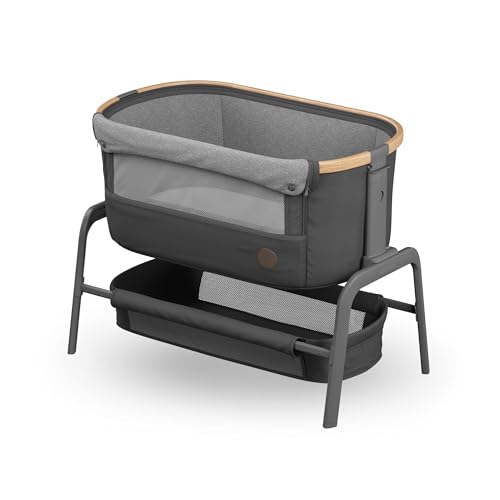The Best Baby Cot To Bed Methods To Transform Your Life
Transitioning from Baby Cot to Bed: A Comprehensive Guide for Parents
The journey from a baby cot to a bed marks a substantial turning point in a child's development. It signifies self-reliance and an action toward maturing. Nevertheless, this shift can frequently be intimidating for both moms and dads and kids. Understanding the process, the best timing, and how to make the shift smoother can significantly help in this journey. This article checks out the important to think about when transitioning your kid from a cot to a bed, consisting of common FAQs, pointers, and a structured strategy to ensure the procedure is as seamless as possible.
Why Transition from a Cot to a Bed?
Developmental Milestones
Transitioning to a bed is generally triggered by a number of elements:
Physical Growth: As children grow, they outgrow their cots. The typical size for a convertible cot is generally implied for infants up to 3 or 4 years old.
Cognitive Development: As toddlers end up being more curious and familiar with their surroundings, they might attempt to climb up out of their cots, posing security dangers.
Potty Training: Once a child is potty trained, they may need much easier access to the bathroom, which a bed can help with.
Brother or sisters: The arrival of a new sibling can likewise necessitate this shift, as the cot might require to be freed up.
When to Make the Transition
There is no one-size-fits-all answer to when a kid must transition from a cot to a bed. Nevertheless, here are some indications that it may be time:
- Climbing Out: If the kid is attempting to climb up out regularly.
- Age Consideration: Many experts recommend this transition around the age of 2 to 3 years, although every child is distinct.
- Required for Independence: Children may express a desire for a big-kid bed.
Types of Beds Suitable for Toddlers
Not all beds are developed equal when it comes to children. Here's a breakdown of ideal bed types:
Bed Type
Description
Pros
Cons
Toddler Bed
Smaller sized, lower to the ground, typically with side rails.
Size-appropriate for young children; stability.
Restricted life expectancy as they grow out of quickly.
Single Bed
Requirement size bed suggested for older children.
Lasts longer; can be utilized for several years.
May be too huge for a young child; threat of falling.
Convertible Crib
Crib that transforms into a young child bed.
Versatile; saves money in the long run.
Can be pricey; some might not use full-sized alternatives.
Loft Bed
Raised bed with space below for play or storage.
Makes the most of space; fun for kids.
Not ideal for really children; security issues.
Actions to Transition Smoothly
Transitioning to a bed can be simplified with cautious planning. Here's a detailed guide:
1. Prepare the Space
- Select a Location: Decide where the bed will be positioned.
- Childproof the Room: Since kids are naturally curious, make sure that furnishings is stable, sharp edges are covered, and hazardous items are out of reach.
- Keep Familiar Items: Retain favorite toys and bed linen to provide convenience in the brand-new environment.
2. Present the Bed
- Involve Your Child: Let your child assistance choose their bed or bed linen to create excitement.
- Discuss the Transition: Make them understand that they are ending up being a big kid by having a big-kid bed. Usage encouraging language.
3. Make the Swap
- Bedtime Routine: Keep the bedtime regular consistent. This creates familiarity and convenience during the shift.
- Assistance: Offer them reassurance however avoid being extremely protective; it's important to motivate independence.
4. Address Fears and Concerns
- Talk About Fears: Children may have worries of falling or the dark; discuss these freely.
- Enhance Safety: Use guard rails on the bed at first and describe what to expect throughout the night.
5. Display and Adapt
- Be Patient: It may take some time for your kid to change completely.
- Stay Consistent: Maintain the nighttime regimen, even when problems develop.
Frequently Asked Questions Regarding Transitioning from Cot to Bed
Q1: How long does the shift from a cot to a bed usually take?
A1: The shift can differ substantially among children— varying from a few days to a couple of weeks— as they adapt to oversleeping a brand-new area.
Q2: Should I buy an unique toddler bed?
A2: Investing in a toddler bed can make the shift simpler since they are created with safety in mind; however, if you prefer to go directly to a single bed, that can work too with the ideal precaution.
Q3: What if my kid keeps getting out of bed?
A3: This is regular! Motivate them to remain in bed and develop positive reinforcement by rewarding them for remaining in bed through the night.
Q4: Is it all right to shift to a big bed too early?
A4: Transitioning too early can result in sleep disturbances. It's vital to examine the readiness of the child based on their signs and advancement.
Transitioning from a baby cot to a bed is a substantial action for both kids and parents. With thoughtful preparation and understanding of the child's requirements, moms and dads can make the shift smoother and more satisfying. By acknowledging when to make published here , comprehending the types of beds readily available, and preserving a constant regimen, parents can ease fears and foster a sense of security for their little one throughout this interesting new chapter. Ultimately, every child is different, and patience is crucial in making this journey a positive experience.
